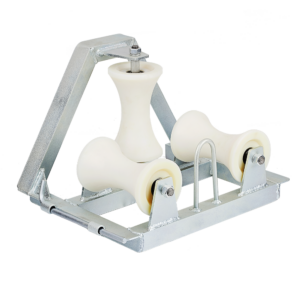Safety Equipment and Precautions
When working on electrical construction projects, prioritizing your safety is paramount. Start by equipping yourself with the right Personal Protective Equipment (PPE). Safety glasses are a must to protect your eyes from any flying debris, sparks, or dust. Remember to wear insulated gloves that are rated for the electrical tasks you are performing; they are your first defense against electric shock.
Non-contact voltage testers have become essential tools. They allow you to detect live wires without making physical contact, greatly reducing your risk of electrical shock. For closer, more precise work, a contact voltage tester can be indispensable. Choose one that’s suitable for the voltage levels you anticipate encountering to ensure accurate readings.
When selecting equipment, always check for the appropriate insulation rating relevant to the voltage levels you will face. The right insulation can mean the difference between a close call and a serious accident.
Lastly, invest in quality equipment approved by safety standards organizations (such as OSHA). This step ensures that all your tools and gear are tested rigorously for safety and effectiveness in protecting you, the electrician, on the job. Stay informed, stay equipped, and stay safe.
Basic Hand Tools for Electricians
When tackling electrical construction tasks, having the right hand tools can greatly streamline the process and enhance safety. Let’s focus on those essential hand tools you’ll need to efficiently cut wires, fasten components, and grip parts.
Cutting and Stripping Tools
Your tool kit should start with cutting and stripping tools. A reliable wire stripper is indispensable for safely preparing wires, and diagonal cutting pliers or side cutters can neatly trim wires to length. For tougher materials, a utility knife may be necessary.
Screwdrivers and Nut Drivers
An array of screwdrivers is crucial, including both flat-head and Phillips-head types. For electrical work, ensure you have insulated screwdrivers rated for electrical safety. Nut drivers can be helpful for tightening connections in cramped spaces.
Pliers and Wrenches
Pliers are the multipurpose workhorses of your tool pouch. Linesman pliers are useful for gripping, twisting, and cutting wires. Needle nose pliers offer precision in tight spaces, while tongue-and-groove pliers give you the grip you need for larger hardware. A sturdy wrench completes your toolkit, providing the leverage to secure fittings and conduit.
- Linesman Pliers: Versatile for cutting, gripping, and twisting wires.
- Needle Nose Pliers: Ideal for precision work in confined areas.
Measuring and Leveling Tools
When working on electrical construction, accuracy in measuring and ensuring level structures is critical. The right tools will help you achieve precision quickly and effectively.
Tape Measures and Rulers
Tape Measure: Your go-to tool for most measuring tasks is the tape measure. It’s portable, flexible, and can accurately measure both long and short distances. Ensure you have a durable one that can withstand the rigors of a construction site.
- Types: Standard tape measures come in lengths ranging from 12 to 35 feet.
- Usage: Ideal for measuring wires, conduit lengths, and spacing between fixtures.
Rulers: For smaller tasks where accuracy is paramount, a good ruler can be indispensable.
- Materials: Typically made from metal for durability on a construction site.
- Precision: Opt for a ruler with clear markings for accurate linear measurement.
Levels and Laser Tools
Levels: Maintaining a straight, level line is essential, especially when installing conduits and fixtures.
- Torpedo Level: Compact and handy for small spaces.
- Usage: Check that your work is perfectly horizontal or vertical.
Laser Level:
- Green Laser Level: Emits a visible green beam, useful in brightly lit conditions. With a range that often exceeds 30 meters, it’s excellent for both indoor and outdoor use.
- Versatility: Select a laser level that offers both horizontal and vertical reference lines for full-room layout.
Electrical Testers and Multimeters
When working on electrical construction projects, having the right tools can streamline your tasks and enhance safety. Electrical testers and multimeters are essential gadgets that help you measure various electrical properties.
Voltage Testers:
- Contact Voltage Tester: You’ll use this tool to check for voltage presence in wires, outlets, and circuits by physical contact.
- Non-Contact Voltage Tester: This device allows you to detect voltage without touching a conductor, providing a safer way to identify live wires.
Multimeters are versatile instruments that can measure several parameters:
- Current: Essential for checking the flow of electricity through a circuit.
- Voltage: You can measure the potential difference between two points in a circuit; multimeters can work as a voltmeter.
- Resistance: Understanding resistance in materials helps you gauge the continuity of circuits.
A Digital Multimeter is preferable for most tasks due to its accuracy and ease of reading. It’s your go-to tool for diagnostics and troubleshooting. When shopping, you might encounter terms like “true RMS” for accurate readings on non-linear loads or a mention of “low impedance mode” to prevent false readings due to stray voltages.
Remember to select a multimeter with a safety rating that matches the highest voltage levels you’ll encounter, such as CAT III for 1,000V.
Specialized Electrical Tools

Specialized tools in electrical construction can significantly streamline the installation of wiring systems, ensuring precision, safety, and efficiency in your work.
Conduit Tools
Conduit Bender: This essential tool is your go-to for shaping and bending conduit accurately. With a quality conduit bender, you can tailor metal conduits to fit the specific angles and curves required in your electrical installations. Remember, precise bends prevent damage to the wiring and maintain the integrity of the electrical conduit system.
Wire Fishing and Pulling Tools
Fish Tape: Your task of drawing wiring through conduit will be much easier with a fish tape. It’s a long, slender tool that helps you pull conductors through the often narrow and twisty paths of the conduit.
- Fish Tapes: Given their crucial role, owning a selection of fish tapes in various lengths and materials is a wise choice. Each offers a different level of flexibility and strength to accommodate varying conduit configurations and pulling needs.
Power Tools for Efficient Installation
In the realm of electrical construction, having the right power tools can significantly streamline your installation process. The following sections outline specific drilling and cutting tools, as well as fastening devices, that are designed to bolster efficiency during your projects.
Drilling and Cutting Power Tools
Drills: Having a reliable power drill is crucial for a multitude of tasks, including creating holes for wiring and assembling components. Look for drills with features like variable speed and reverse functions for added versatility.
Rotary Hammers: When you’re working on concrete or masonry, a rotary hammer provides the muscle needed for tough drilling jobs. They offer more power than ordinary drills, making them crucial for heavy-duty projects.
Saws: Your cutting tasks require precision and power, which can be found in tools like the reciprocating saw and the hacksaw, both adept at slicing through materials like conduit and metal framing.
- Reciprocating Saw: This tool allows you to cut in tight spaces and is ideal for demolition work where precision isn’t as crucial.
- Hacksaw: A more manual option, but in its powered form, it allows for cutting metal and plastic with ease.
Fastening Power Tools
Impact Drivers: When it’s time to fasten screws and bolts, an impact driver makes the job quicker and reduces wrist strain. Their high torque output is perfect for driving long screws into dense materials without stripping them.
Cordless Screwdrivers: For lighter tasks or working in tight spaces where an impact driver might be too powerful, a cordless screwdriver can be your go-to tool. Its portability and flexibility make it indispensable for quick fixes and installations.
Tool Maintenance and Comfort
When undertaking electrical construction, your efficiency hinges on the quality and condition of your tools. Regular maintenance ensures your devices remain operational, reducing downtime due to tool failure. Rust can impair tool function, so a preventive approach with WD-40 or comparable lubricants on your steel tools can keep them in prime condition.
Durability is a key factor for tools you rely upon daily. Investing in quality tools means less frequent replacements and confidence in your equipment under stress. Tools with a core of steel or fiberglass not only last longer but can also handle demanding jobs with less wear and tear.
For personal comfort and safety, seek tools with insulated handles. Insulation not only guards against electrical shocks but can also reduce strain on your hands, allowing for a comfortable grip. This contributes to maintaining a steady hand and precision in your work.
Consider the following to enhance comfort and tool life:
- Regularly clean tools post-use to remove debris and potential conductive materials.
- Inspect insulation on tools; replace if worn or damaged.
- Store tools in a dry, organized environment to prevent accidental damage or loss.
- Keep sharp tools well-honed to reduce the physical effort required for use.
Tool belts or pouches adjusted to your fit can significantly increase convenience. These should be robust yet light enough to carry comfortably for an extended period.
Here’s a handy list of comfort-enhancing features to look for:
- Cushioned grips for ease of use and reduced fatigue
- Lightweight materials to ease the burden on your tool belt
- Ergonomic design to improve handling and control, reducing the risk of repetitive strain injuries
Organization and Storage Solutions
Organizing your tools improves efficiency and keeps your workspace safe. Here are approaches to consider:
1. Portable Toolkits: Perfect for electricians on the move. Look for options like the Carhartt Legacy Electrician’s Pouch, which offers a blend of internal loops and exterior pockets along with a metal tool hook.
2. Power Tool Storage Systems: Your power tools deserve sturdy houses. Wall cabinets are an excellent choice. They protect your tools from dust and moisture and save floor space.
3. Modular Storage Solutions: Systems like the Bosch L-Boxx or Festool Systainer allow for personalized arrangements. These systems can grow with your collection and adapt to your needs.
4. Mobile Workstations: Choose a rolling toolbox for convenience across the jobsite. These typically contain detachable components, making it simple to bring only what you need.
5. Wall-Mounted Options: Clear workbench clutter with wall mounts and pegboards. They allow for quick access and can be reorganized with ease.
Here’s a quick view of what to consider for storage:
| Feature | Benefit |
| Portability | Move tools easily across the worksite |
| Durability | Protects tools from wear and tear |
| Accessibility | Keeps tools within arm’s reach |
| Customization | Tailor the storage to fit your toolset |
| Modularity | Allows for expansion as your needs change |
Remember to assess the size and type of your toolkit when choosing a storage solution. Your choice should support the complexity of your projects and the diversity of your tools.
Electrical Systems and Components
In the context of electrical construction, convenience and safety are paramount. You’ll find that advanced tools and methodologies have a significant impact on how you install and manage your electrical systems and components. Let’s look at some specific tools that can enhance the process involving wiring, connectors, circuit breakers, and panels.
Wiring and Connectors
When working on electrical installations, PVC conduits protect your wiring, while ensuring that repairs and upgrades remain straightforward. You can use a variety of connectors that secure wiring within these conduits and fixtures. It’s essential to have a selection of connectors and electrical tape at hand for both creating joints and insulating them. Your toolkit should include:
- Conduit fittings: Ensures that your PVC conduits are firmly held in place and connected, with ease of access for future maintenance.
- Crimp connectors: These are vital for attaching wires securely, reducing the risk of shorts and disconnections.
Circuit Breakers and Panels
Your electrical panel is the heart of your electrical system, where safety devices, like circuit breakers, are housed. A circuit breaker finder is a must-have tool that can save you a lot of time during both installations and repairs. It quickly identifies the correct circuit breaker associated with any given outlet. When installing or repairing panels, always adhere to safety guidelines. Here’s a compact toolkit that could assist:
- Insulated screwdrivers: Protects you from electric shocks while working on panels.
- Flashlight or headlamp: Enhances visibility and allows for hands-free operation while working on panels.


